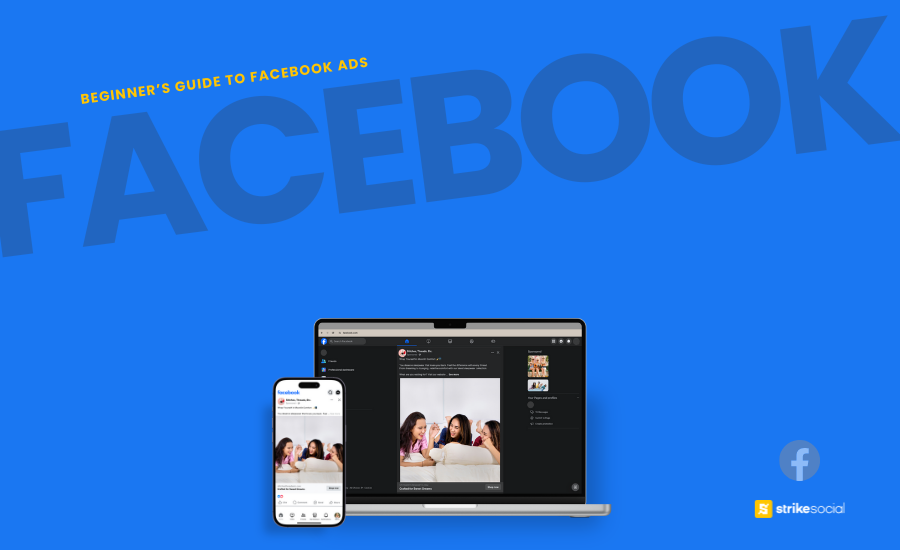Strike Overview
- A social media giant—brands, and businesses starting in Meta are in dire need of a Facebook ads guide because advertising on Facebook is no longer as easy as it would seem.
- By 2025, U.S. social media ad spending is projected to reach US$82 billion, with Facebook leading the pack with more than 80% share, followed by LinkedIn and Pinterest. As more ad spend is being poured onto Facebook advertising, more brands are joining in on the auction.
- Success in Facebook advertising isn’t as simple as just clicking “submit” and letting Meta Ads Manager do the rest. There are key steps to take before launching your campaigns, as well as ongoing management to ensure continued success. Read our comprehensive Facebook Ads guide to set yourself up for big wins on Meta in 2025.
Jump to Section
Facebook Ads Made Simple: A Beginner’s Guide for Businesses
By 2025, Facebook’s advertising reach in the U.S. is projected to surpass 250 million users, climbing to over 260 million by 2028. Far from being just a social networking site for sharing updates and connecting with loved ones, Facebook has become a vital platform for businesses, with 52.8% of its users actively following or researching brands and products on the platform.
Whether you’re a business just starting with Facebook ads or looking for a clear refresher to sharpen your strategy, this guide by Strike Social will walk you through everything you need to know to create, launch, and manage effective campaigns.
What Are Facebook Ads?
Facebook ads are a powerful tool for businesses to engage with their target audience directly on Facebook and across the Meta ecosystem. These ads allow advertisers to connect with users through various platforms, including Instagram, Messenger, and WhatsApp, all under the Meta advertising network.
Ad Specs, Formats, and Safe Zones for Facebook Ads
Because there are plenty of ways to get audience reach and engagement through Facebook ads, we’ll give a quick rundown of the different advertising formats available:
- Single image ads: Eye-catching static visuals designed to highlight promotions, brand offers, or deals in a simple and impactful way.
- Video ads: Dynamic content that captures attention through high-quality videos, suitable for feed, Stories, or Reels placements.
- Carousel ads: A swipeable series of images or videos displayed as individual ‘carousel’ cards. Each card within a Facebook carousel ad is linked to a specific product or service page.
- Collection ads: Interactive ads powered by Meta’s Instant Experience, allowing users to explore multiple products directly within the ad.
Facebook Ad Creative Guidelines
To ensure your ad creatives display perfectly across placements, it’s essential to follow Facebook’s ad size requirements. Ad formats are available in 1:1 (square), 9:16 (vertical), and 16:9 (horizontal) ratios, each designed to optimize visibility and engagement.
Pay attention to the Facebook ad specifications so your ads fit seamlessly on your audience’s devices without being obscured by UI elements.
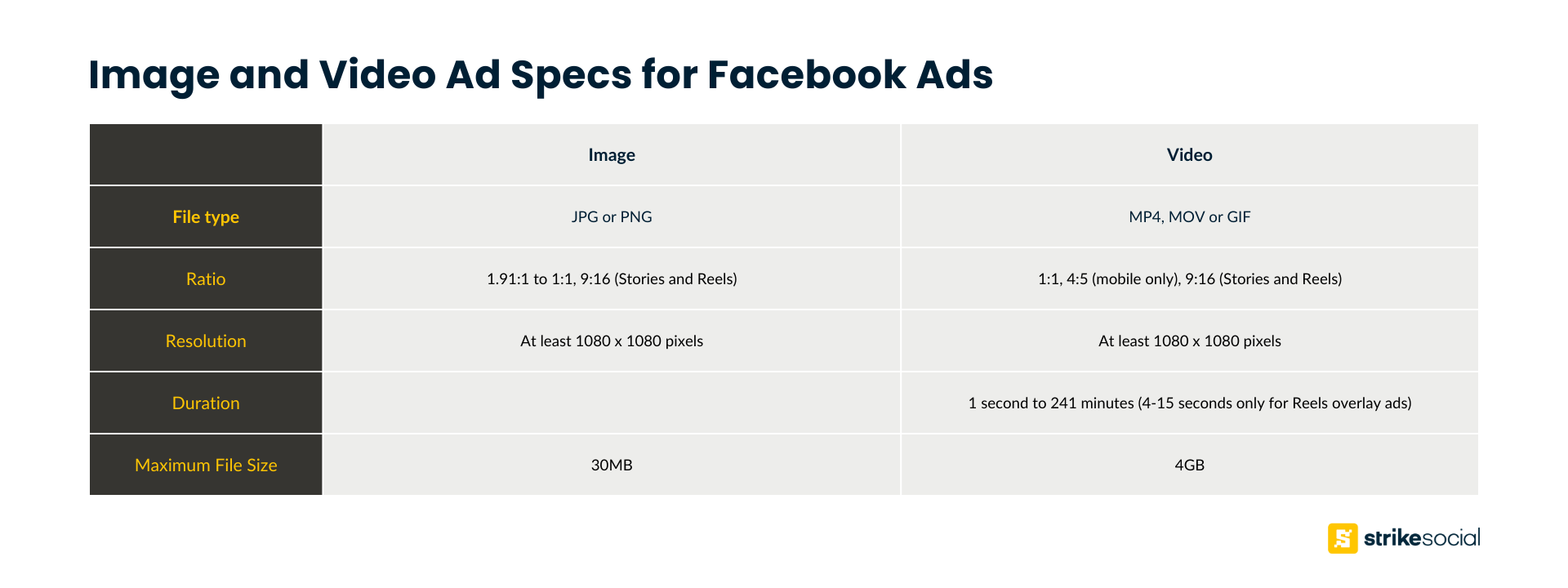
Another key consideration when designing your Facebook ad is the “safe zone.” Keeping essential elements like calls-to-action (CTAs) and key messages within this area ensures they remain fully visible to your audience.
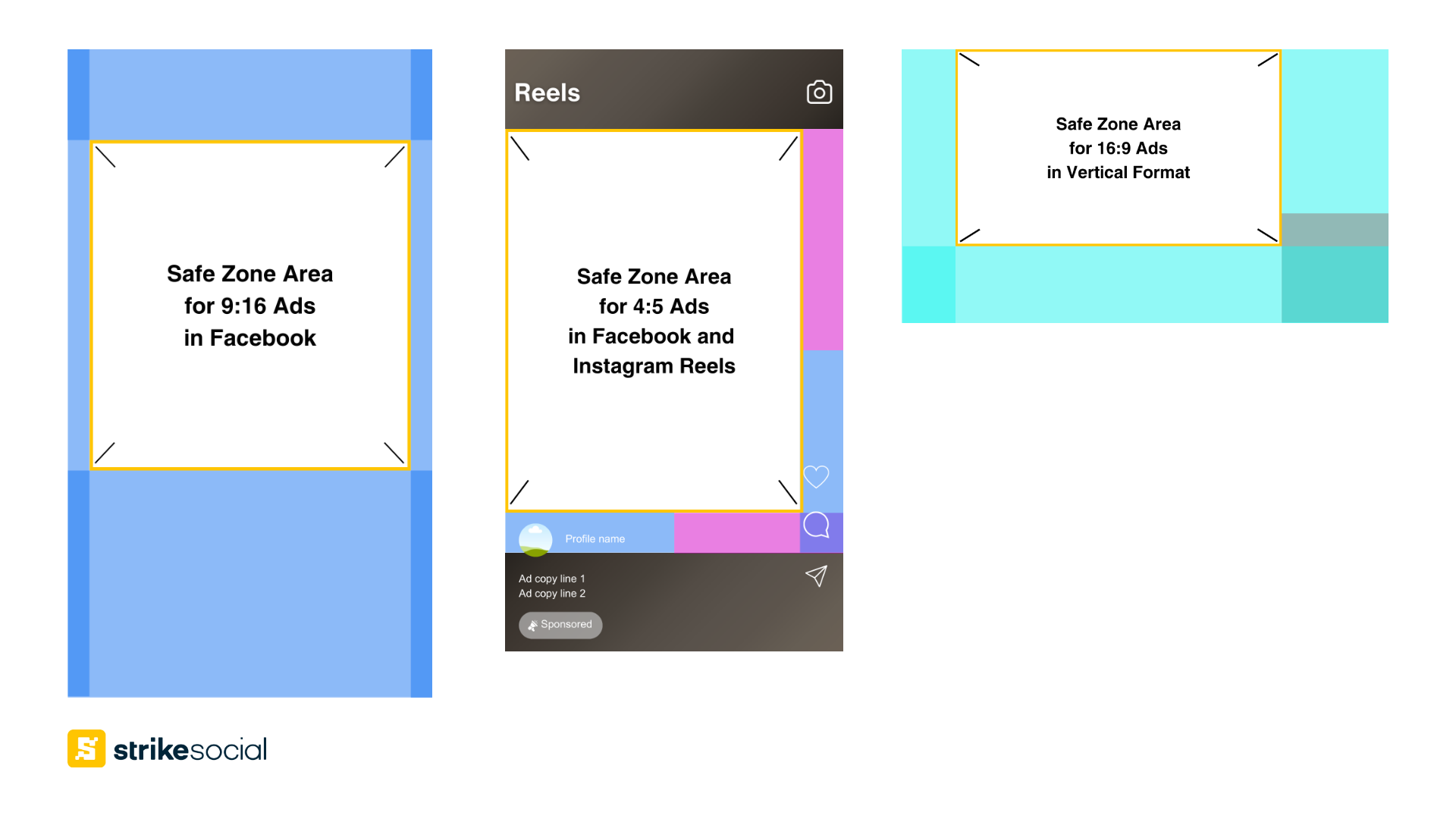
Further Reading
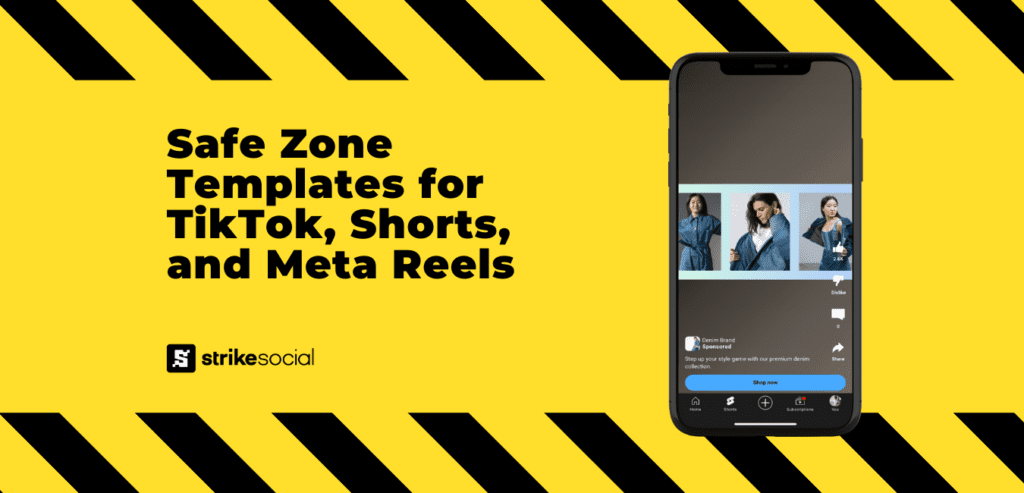
Facebook Reels Safe Zone Guide
With short-form video content basically taking over social media advertising, you must always make sure your critical messaging is within the safe zone. See the Meta Reels, YouTube Shorts, and TikTok safe zone guide to help you post your ads without worrying about your profile picture, ad copy, or even the like and share buttons covering it up.
Additionally, text limitations for Facebook ads vary depending on the format and placement. Make sure your ad copy aligns with these requirements:
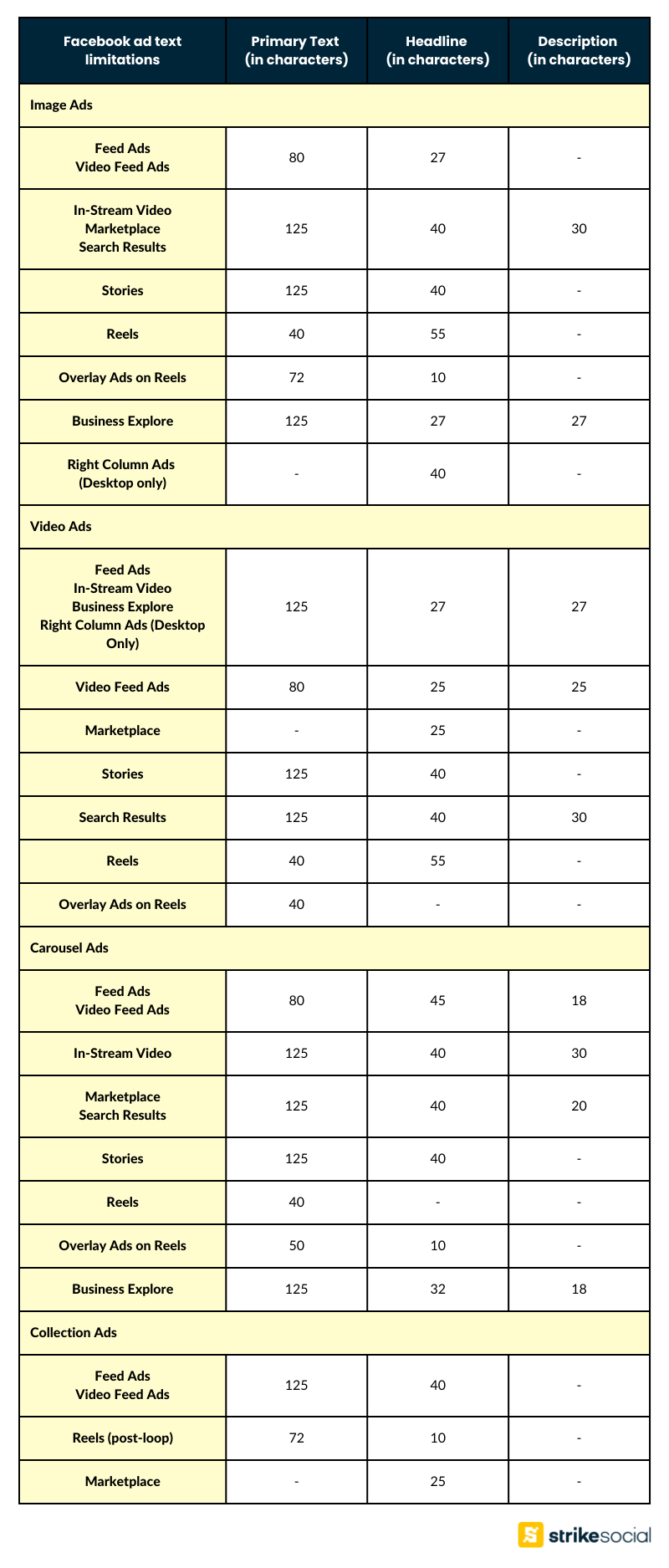
Available Campaign Objectives for Facebook Advertising
Facebook ads offer advertisers flexibility, allowing businesses to target audiences at every stage of the customer journey—from awareness to conversions. This makes them a powerful tool, especially during peak advertising seasons like Mother’s Day, the 4th of July, or Q4 holidays.
For example, Q4 holiday ad trends suggest launching awareness campaigns as early as September, followed by post-engagement campaigns through October to December, to maximize results during the busiest shopping season.
To make the most of your Facebook ad strategy, here are the key campaign objectives available:
Awareness: Introduce your brand to new audiences and expand visibility with:
- Reach
- Brand awareness
- Video views
- Store location awareness
Traffic: Drive users to your desired destination, such as your landing page, website, or app:
- Link clicks
- Landing page views
- Profile or page visits
Engagement: Encourage interaction with your Facebook ads and spark conversations through:
- Post engagement
- Video views
- Contact you via Messenger, WhatsApp, or Instagram
Leads: Gather potential customers or prospects for newsletters, sales funnels, or direct outreach.
- Instant forms
- Contact you via Messenger, WhatsApp, or Instagram
- Calls
App promotion: Promote your iOS or Android app to increase installs or engagement with updates:
- App installs
- App events
Sales: Target highly refined audience segments likely to convert or purchase with:
- Conversions
- Catalog sales (through Instant Experience format)
- Calls
Advantage+ Features from Meta Ads Manager
Meta’s Advantage+ suite was introduced as part of Facebook’s effort to leverage AI technology and enhance the advertiser experience. Initially launched for Shopping campaigns to improve the discovery of e-commerce ads and boost sales, it has since expanded to offer more solutions for Facebook advertisers:
Advantage+ Audience: This feature extends your audience targeting beyond the parameters you initially set, using Meta’s AI to discover and engage with new, highly relevant users.
Advantage+ Placements: For targeted campaigns, manual placements allow precise control over where your ads appear. As for broader reach, Meta Advantage+ Placements automatically optimizes your ads to appear in the most engaging placements across the Facebook app and the Meta Audience Network.
When you run Facebook ads, your Facebook video ads and image ads can appear selectively or across all of the following placements, depending on which placements work best:
- Facebook Feed
- Facebook Marketplace
- Facebook Video Feeds
- Facebook Right Column (desktop)
- Business Explore
- Messenger Inbox
- Facebook Stories
- Facebook Reels
- Messenger Stories
- Facebook In-Stream Videos
- Overlay Ads on Reels
- Facebook Search Results
- Meta Audience Network (native, banner, and interstitial)
- Meta Audience Network Rewarded Videos
Advantage+ Creative: At the ad level, Advantage+ offers tools to enhance creative assets, ensuring they resonate with audiences. These include:
- Image templates
- Image brightness and contrast
- Music
- 3D animation
- Image expansion
- Image animation
Advantage+ App Campaigns: Designed for app install campaigns, this feature streamlines ad delivery by minimizing inputs for Facebook targeting, campaign creation, and management.
Advantage+ Shopping Campaigns: The pioneering feature of the Advantage+ suite, this tool is tailored for Facebook Shops and e-commerce businesses. Advertisers have reported a 17% decrease in CPA (cost per action) and a 32% increase in ROAS (return on ad spend), proving its effectiveness as an AI solution for advertisers.
Preparing for Your Facebook Ad Campaign
Now that you’re familiar with the fundamentals of Facebook advertising, it’s time to focus on the essential preparations for a successful campaign. While the Meta Business Suite and Facebook’s AI tools simplify the process, understanding the finer details is key to maximizing ad performance.
Proper preparation ensures that your campaigns are effective and aligned with your business goals. Let’s examine the key steps before launching your Facebook advertising campaigns.
Audience Insights and Targeting
As of early 2024, Facebook has over 190 million users in the U.S., and this number is expected to grow by 9% year-over-year through 2025. But with such a large audience, it’s crucial not to target everyone.
Wasted Facebook ad budget is a real risk if you don’t properly define and target your audience. Know the tools within Facebook Ads Manager to help you identify and target the right people.
Know your current audience with Audience Insights
Rather than relying on guesswork, start by using Facebook Audience Insights to gather data on your current audience. Here are the three key sections to explore on the Audience Insights page:
- Demographics: This section reveals key details such as age, gender, and location of your current audience. For example, if your content resonates with users primarily in Chicago, and you’re a local retail brand, you’ll want to focus on targeting Chicago and surrounding areas for better ad relevance.
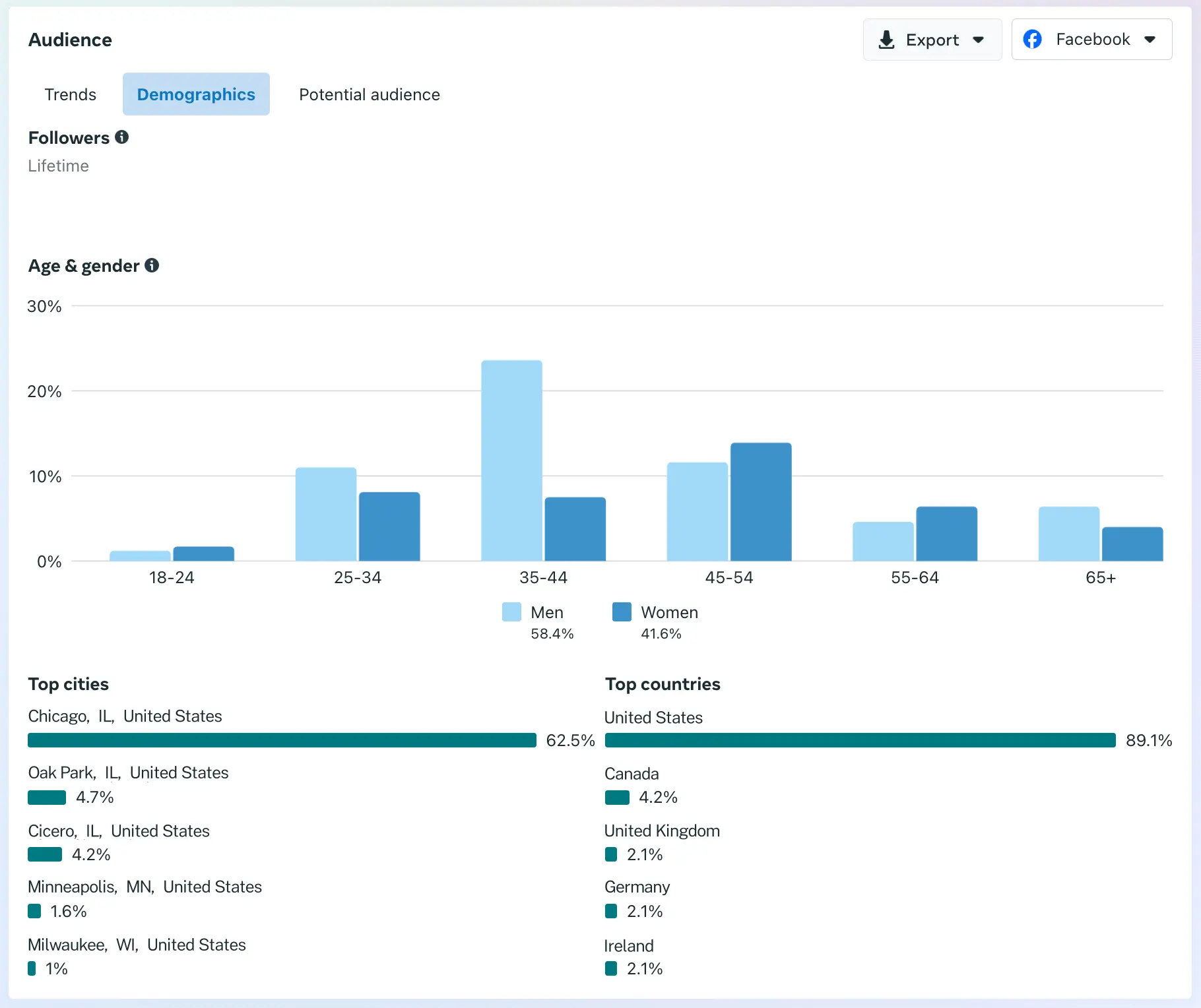
- Trends: This tab helps identify organic engagement patterns. You can see when engagement spikes, such as during a specific promotional period, such as the Super Bowl. If you notice a seasonal uptick in Q1, for example, you might adjust your strategy by ramping up your budget from Q2 to Q4 for more impactful campaigns.
- Potential audience: This section shows broader audience segments who have not yet engaged with your brand but could be a good fit for your ads. If you’re currently reaching the 35-44 age group but want to expand to younger audiences like 18-24-year-olds, the potential audience data will help you determine whether this demographic is worth targeting. While not an exact prediction of success, it provides valuable insights to help guide your targeting decisions.
Reach previously engaged audiences with Retargeting tools
One of the strengths of social media advertising is the ability to retarget audiences who have already interacted with your brand. With the Facebook retargeting feature, you can reach these users based on specific actions they’ve taken across various platforms:
- Visitors to your website or specific landing pages
- Users who added items to their cart but didn’t complete the purchase
- Engagement with your Facebook page content
- Existing customer database (uploaded as a file)
- Lookalike audiences: New users who share similar characteristics to your existing customer base
Facebook Cost and Bidding Optimization
Facebook advertising costs can escalate quickly if not carefully managed. While Advantage+ provides a convenient, automated solution, relying exclusively on Meta’s technology for auction bids may not always yield the most effective outcomes.
Here’s how to better optimize your bidding strategy:
Campaign budget optimization (CBO) vs. manual bid adjustments
With Campaign Budget Optimization (CBO), Meta’s AI automatically allocates your campaign budget across different ad sets based on real-time performance.
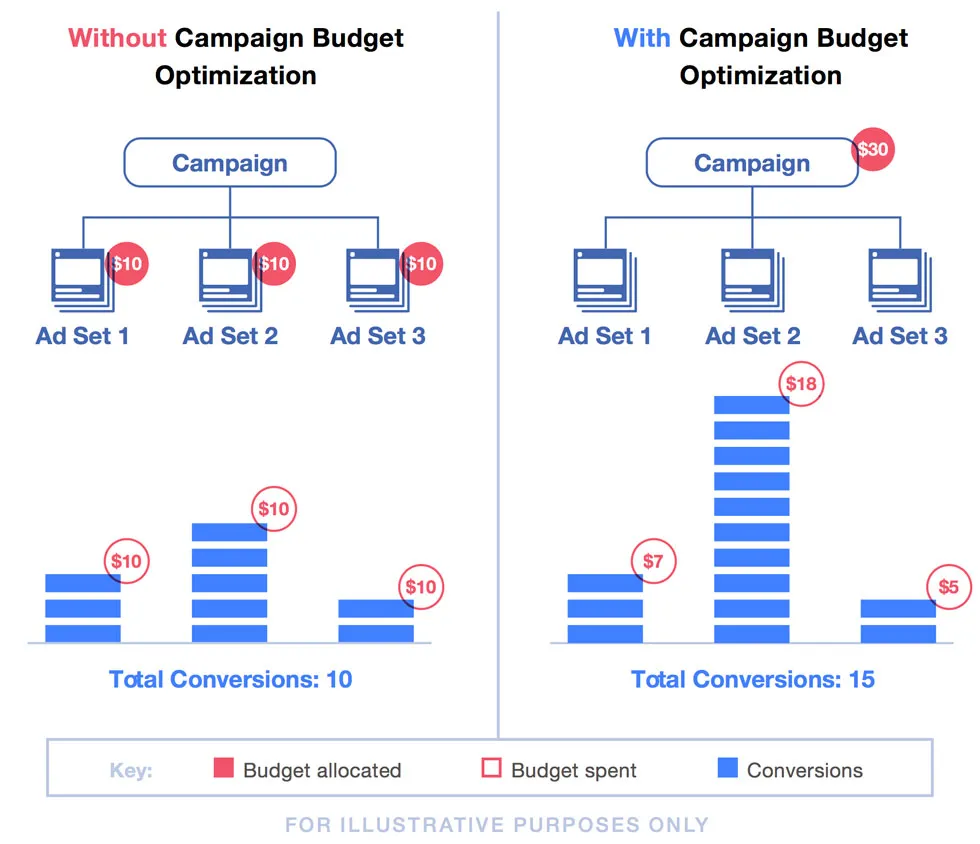
Rather than using a fixed bid auction, the CBO system adjusts the budget to favor the best-performing ad sets, ensuring that even lower-performing ones still get a chance to improve and potentially drive conversions. This helps your Facebook campaign achieve more leads or conversions in line with the campaign objective.
However, one potential downside of CBO is that it places full reliance on Meta’s AI. AdTech software integrated with Meta’s API can offer more precision for greater control over bid adjustments and to avoid overspending. Campaign Lab, Strike Social’s proprietary tool, is designed to monitor bid optimization 24/7, ensuring that your campaigns achieve the best possible cost-efficiency.
Contact Us
Partner with a SWAS (Software with a Service) AdTech agency that boosts campaign performance by 10-20%.
Find out how Strike Social works with your team to create cost-efficient, high-performing campaigns.
How to calculate the cost of Facebook ads?
Facebook ads cost can vary based on your campaign goals, and understanding how to measure these costs is essential for optimizing efficiency. Here are some of the core Facebook cost metrics and how to compute them:
| Campaign objective | Core Facebook cost metric | Explained | Formula |
|---|---|---|---|
| Awareness – Reach | CPM (Cost-Per-Mille) | Measures the cost for every 1,000 impressions your ad receives. | CPM = (Facebook Ad Spend / Impressions) x 1000 |
| Engagement – Video Views | CPV (Cost-Per-View) | The cost incurred for each view of your video ad. | CPV = (Ad Spend / Views) |
| Traffic – Link Clicks | CPLC (Cost-Per-Link Click) | Indicates the cost for each click on your ad’s link. | CPLC = (Total Facebook Spend / Link Clicks) |
| Leads – Instant forms | CPL (Cost-Per-Lead) | The cost associated with acquiring a lead through a form submission. | CPL = (Leads campaign spend / Leads collected) |
| Sales – Conversions | Purchase ROAS (Return on Ad Spend) | Evaluates the revenue generated for every dollar spent on ads. | ROAS = (Revenue generated / Amount spent on sales campaign) |
Further Reading
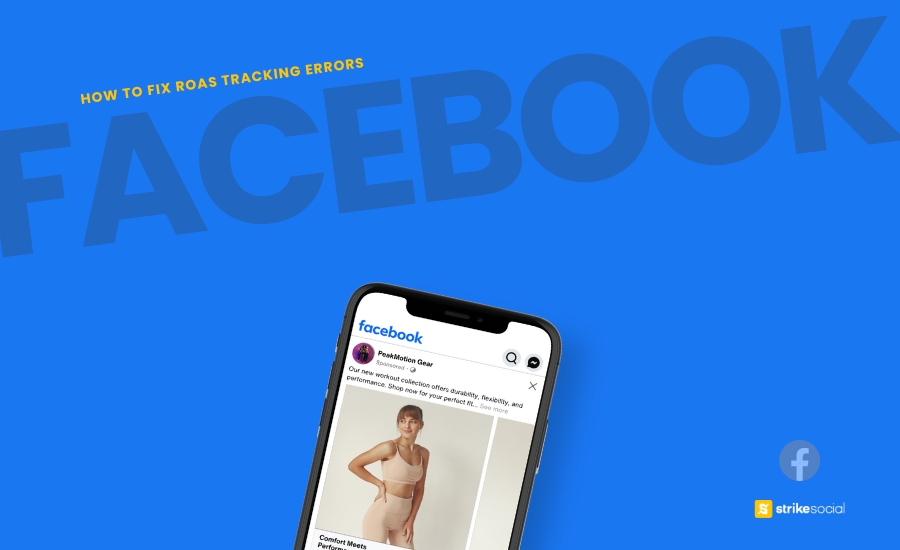
Inaccurate Facebook ROAS? Here’s What You Should Look For
To fix discrepancies in your Facebook ad ROAS, start by uncovering the underlying issue. Understanding the cause will help you apply the right solutions and regain dependable ROAS tracking.
Cost and Performance Benchmarks for Facebook Ads
It’s important that before you fully curate your media plan for your 2025 Facebook campaign, you have a set of benchmarks against which to measure your performance. Understanding industry standards and comparing them to what your ad agency can deliver ensures you maximize your ad spend efficiently.
We analyzed our US campaigns using Strike Social’s in-house proprietary tool, Campaign Lab, to give you the latest cost and performance benchmarks for Facebook ads. See the varying trends based on each campaign objective from our Facebook campaigns:
| Campaign goals | Cost benchmarks (range) | Performance benchmarks (range) |
|---|---|---|
| Impressions | CPM: $2.78 – $9.60 | Engagement rate: 2.90% to 14.40% |
| Video views | CPV: $.0045- $.01536 | View rate: 44.81% to 88.92% |
| Clicks | CPC: $0.14 – $0.72 | Click-through rate: 1.07% to 3.29% |
| Link clicks | CPLC: $0.28 and $1.03 | Link click rate: 0.75% to 1.85% |
| Event response/participation | CPER: $0.35 to $1.53 | Event response rate: 0.64% to 0.83% |
While these benchmarks represent typical Facebook performance year-round, be mindful of seasonal spikes—particularly during Q4 holidays or U.S. election years, when political ad spending can drive up auction prices. To avoid these price surges, we recommend launching awareness campaigns earlier, especially during peak advertising periods.
Download the Strike Social Facebook Benchmark Report
Gain valuable takeaways from last year’s Facebook advertising trends, highlighting the key takeaways that shaped industry benchmarks. Download the Strike Social data and trends report to enhance your Facebook ad campaigns, helping you achieve your desired results.
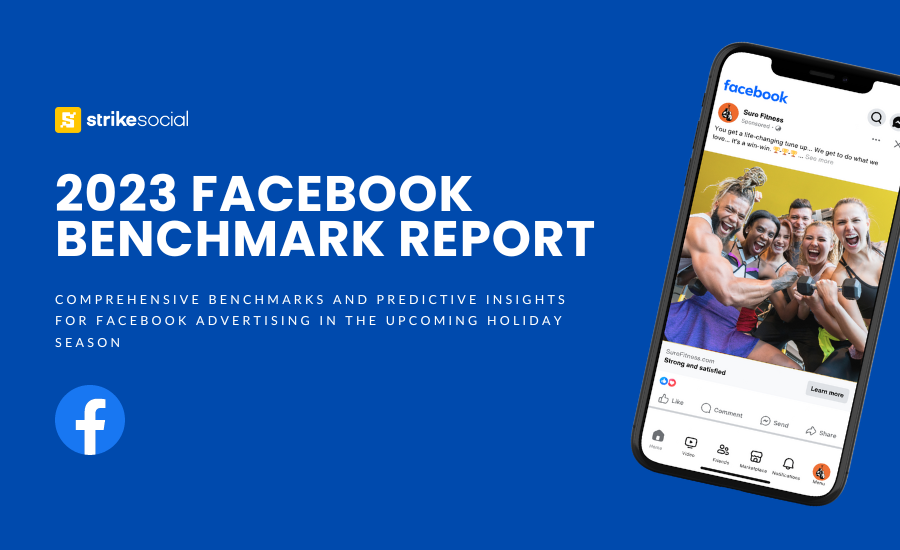
Maintaining Brand Safety in Facebook Ad Campaigns
One of the biggest risks in Facebook advertising is having your brand associated with harmful or explicit content. This can damage your brand’s reputation and undermine the effectiveness of your ads.
In addition to optimizing ad performance and costs, advertisers must ensure their ads aren’t displayed alongside inappropriate or exploitative content. This is where brand safety on Facebook plays a vital role.
Brand safety and suitability controls
Inventory filter: Facebook’s inventory filter is the first layer of brand safety. Similar to YouTube’s inventory types, it offers three options: Expanded, Moderate, and Limited inventory.
The recommended and default setting is Moderate inventory, which ensures ads only appear in safe content. Expanded inventory, while still filtered to comply with Facebook’s Content Monetization Policies, allows for a broader reach.
Publisher block lists: You can create a block list to exclude specific Facebook and Instagram pages, profiles, and apps from showing your ads. These lists can be uploaded as .csv or .txt files, with a maximum of 10,000 publishers per upload. However, do not overly narrow your list, as excluding too many publishers could limit your ad reach.
Content type exclusions: You can exclude your ads from appearing on non-partnered pages or profiles that have not signed up for Facebook’s monetization program. Your ads will only be shown on content produced by registered, vetted Facebook partners, subject to more stringent oversight. Content type exclusions can apply to live videos, in-stream ads, and Facebook Reels ads.
In addition to these advertiser controls, Facebook also enforces brand safety through its Community Standards and Guidelines, Content Review Teams, and quarterly Community Standards Enforcement reports, another measure the platform takes to maintain a safe advertising environment.
Facebook Campaign Guide from Setup to Publish
All set with the Facebook ads preparation! Here are the steps from start to finish to successfully launch and publish your Facebook campaign:
1. Register your Facebook page as a business account. Then, set up your Business Manager account and Ad Account to proceed.
2. Visit Facebook Ads Manager and login to your account.
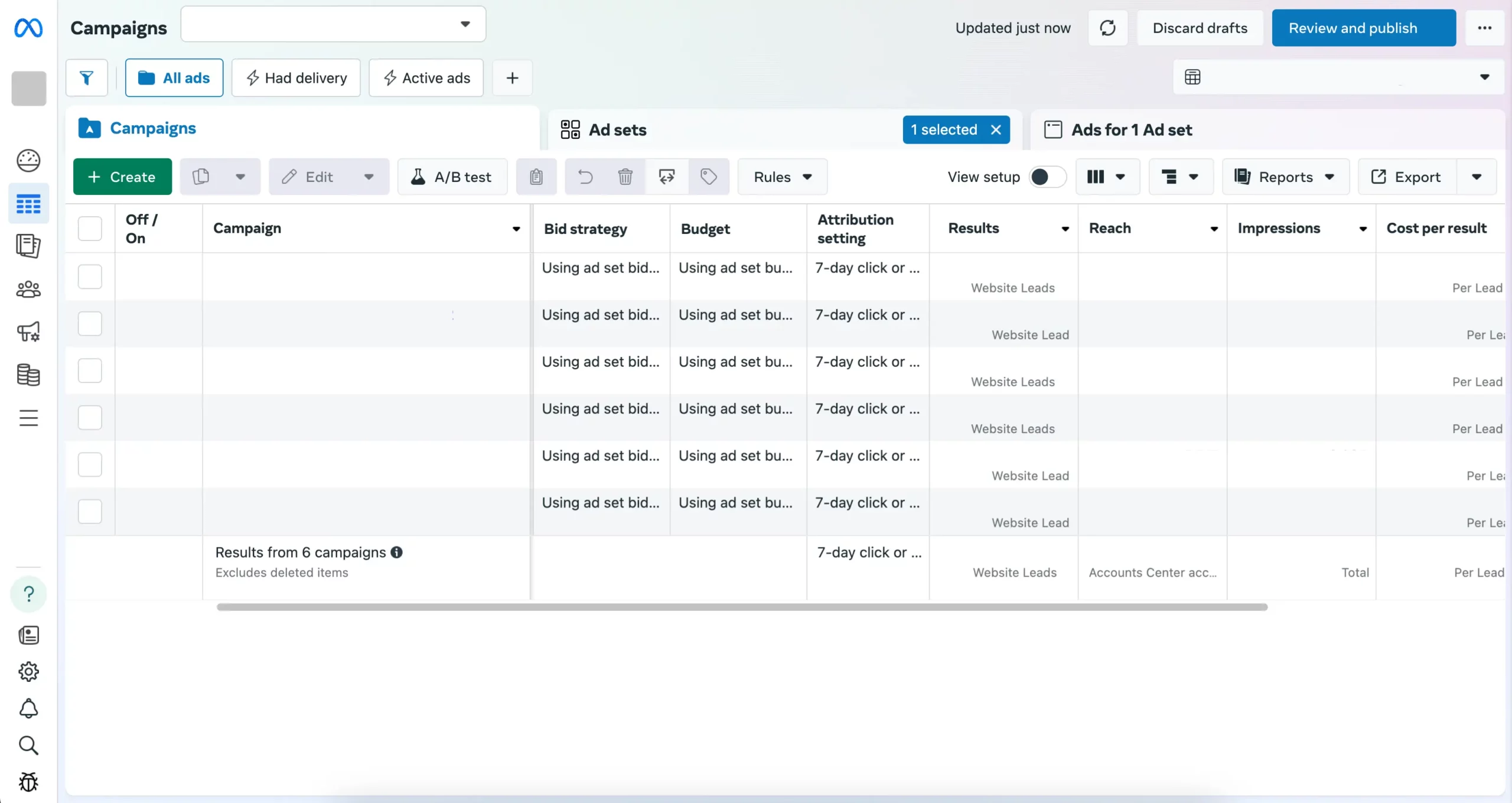
3. Click the +Create button to start a new campaign.
4. Choose the appropriate campaign objective that aligns with your goals (e.g., Awareness, Traffic, Conversions), then click Continue.
5. Under the Campaign level setup, configure the following:
- Campaign Name: Use an organized naming convention for easy identification (e.g., [Campaign Duration – Objective – Product], such as “Jan-Dec 2025 – Impressions – Sleepwear”).
- Special Ad Categories (Optional; As applicable)
- Advantage+ Campaign Budget: Toggle this for automated budget management or leave it off for more manual control.
- A/B Test (Optional; As applicable)
6. On the Ad Set level, you can create multiple ad sets under one campaign. Here are the details you need to set up:
- Ad Set Name: Make it easy to identify (e.g., “2-Piece Pajama Sets – Images” if your ad set uses image creatives).
- Performance Goal: Set your desired campaign objective (e.g., clicks, impressions, conversions).
- Facebook Page and/or Instagram Account: Choose the page or profile that will display your ads.
- Cost Per Result: Set your auction bid if you have a target CPM or cost benchmark.
- Frequency Cap (for Awareness campaigns): Control how often your ad is shown to each unique user.
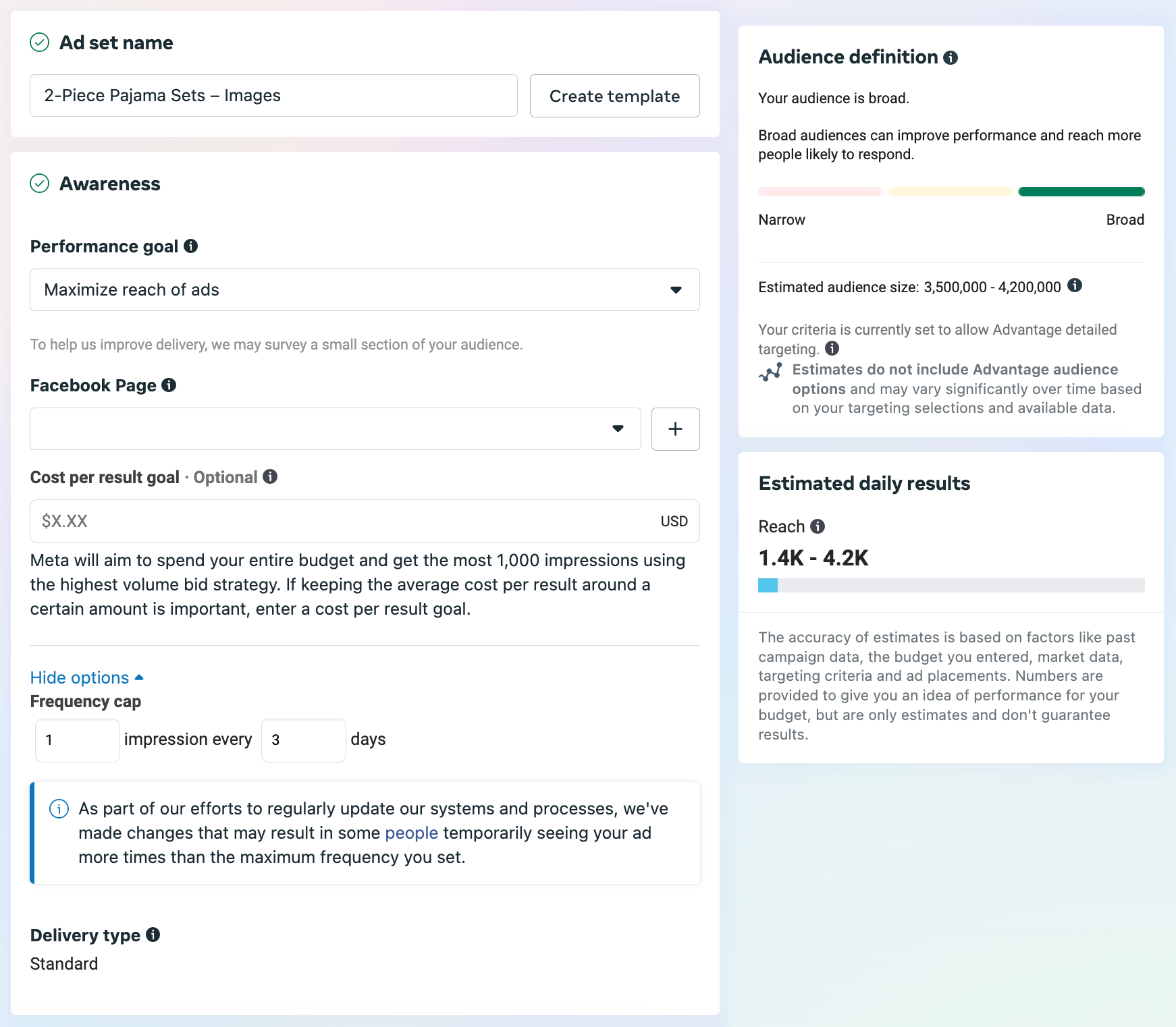
- Dynamic Creative (Optional; As applicable)
- Budget & Schedule:
- Budget: Select either a daily or lifetime budget for your campaign.
- Schedule: Set a campaign start and end date.
- Budget Scheduling: If applicable, adjust budget settings for specific times or dates to boost performance.
- Audience Controls:
- Locations
- Age
- Audience list exclusions
- Advantage+ Audience: Use Meta’s AI to add audience segments based on interests, behaviors, and demographics. Click on Save audience to reuse the same audience segment for other campaigns.
- Placements:
- Advantage+ Placements: Let Meta decide where to show your ads across Facebook, Instagram, and Messenger.
- Manual Placements: If you prefer control, select specific placements like Facebook feed or Messenger.
7. Lastly, under the Ad level, you can now set up the ad creatives. Here are the items to set up:
- Ad Name
- Partnership Ad: Toggle this on if you are partnering with influencers or content creators to use a branded content ad.
- Identity: Verify the Facebook page under which your ad will appear.
- Create Ad: Choose your ad creative. Upload existing content or create a new one, ensuring it meets the recommended Facebook ad sizes.
- Languages (Optional; As applicable)
- Tracking: For ads with landing page redirects, implement UTM tracking via Facebook Events Manager.
8. On the right side of the screen, view a preview of your ad to check that it appears correctly across your selected placements on Facebook and Instagram.
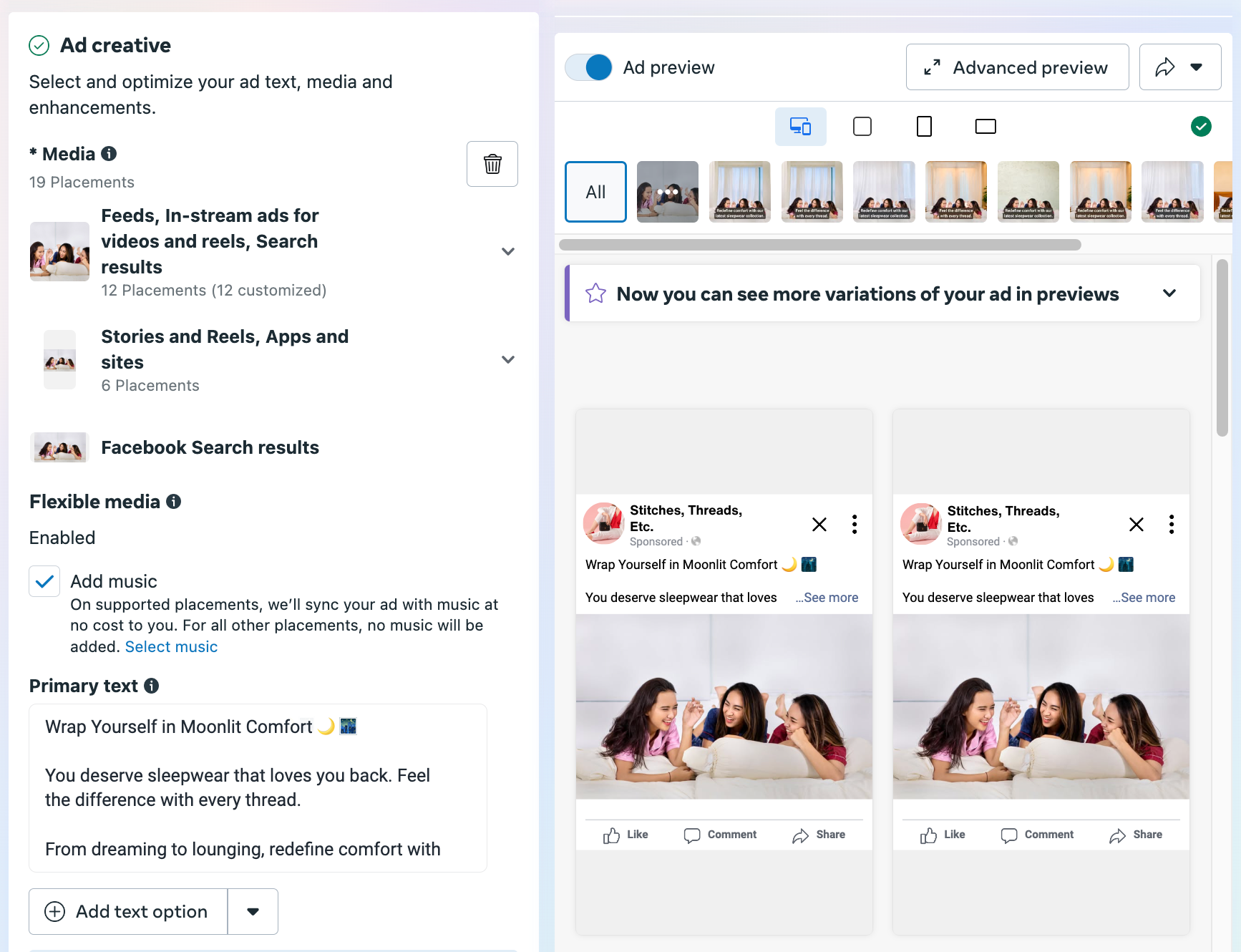
9. Once everything looks good, click Publish to launch your campaign.
The ad review process typically takes up to 24 hours but can be faster. Review common reasons for ad rejection to avoid delays and make sure your campaign goes live without issues.
How a Facebook Ads Agency Can Help Manage and Optimize Your Campaigns
Trust us, setting up and launching the campaign is the easy part. What can be excruciating and require tireless work is monitoring and optimizing your Facebook campaigns as they run.
Ad spending can inflate, performance can slow down, and audience targeting may need to be refined. These tasks require watchful eyes 24/7, and a Facebook ad agency is just what you might need.
Working with a Meta Certified Company
Strike Social is a Meta Certified Company, a prestigious recognition highlighting our expertise as an AdTech Software with a Service (SWaS) business partner. This certification reflects Meta’s trust in our ability to manage and optimize Facebook ad campaigns effectively. With over a decade of experience, we offer in-depth knowledge of Facebook advertising’s nuances, ensuring we can tackle any challenge that arises.
Our Meta-certified media buyers and planners are trained to execute campaigns with precision, leveraging their expertise to deliver outstanding results for our clients.
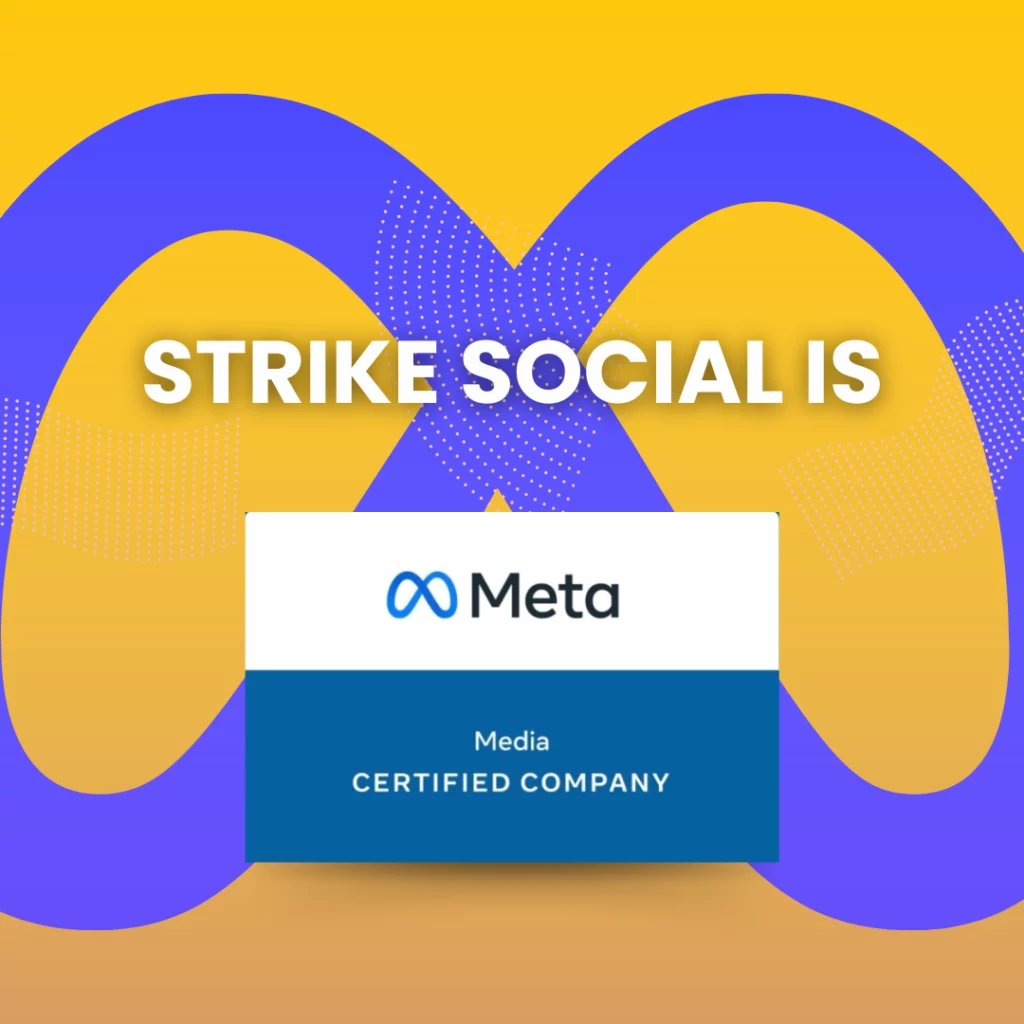
Integration with Meta API via Campaign Lab
Campaign Lab is a powerful tool that supports our team’s optimization efforts. Powered by AI, it provides real-time performance insights and optimization alerts, but the expertise of our media buying team remains essential to make the best use of this data.
With Campaign Lab’s alerts, we quickly identify areas for improvement, whether it’s adjusting bids or refining performance. Thanks to 24/7 optimization by the Strike Social team, we can immediately implement these changes so your campaigns achieve the best results at the most cost-effective rates.
Success in Facebook Ad Campaigns
To demonstrate how a Facebook ads agency can drive effective campaign management and optimization, nothing illustrates this better than tangible results. Here’s how our team applied tailored strategies to lower costs and boost engagement:
34%
Lower CPLC with targeted Facebook and Meta ad placements
28x
ROAS with thorough Facebook pixel monitoring and conversion tracking
300K+
Sign-ups through timely and strategic Facebook ad creative swaps
Your 2025 Facebook Ads Strategies in One Place
Looking for all the essential insights for your 2025 Facebook ad campaign in one place? Strike Social’s blog covers everything from Facebook ads to strategies for other social media platforms. Stay up-to-date with the latest trends, data, and guides on Facebook advertising by subscribing to our newsletter.
Ready to start your 2025 Facebook campaign? Download our Facebook Ad Sizes Guide here to get a head start.


